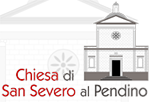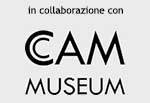
The bison of Altamira
When one of our ancestors drew the portrait of a bison on the walls of a cave, it most likely responded to a double requirement, descriptive and symbolic. Unlike us, he probably felt that he himself was an animal, and he perceived himself as part of a wider cosmogony, of which the bison was another of the elements.
Therefore, if on the one hand the symbolic value of that rock painting could make us think that there was an abstraction from reality, certainly the author tried to faithfully reproduce what he saw, and did it to the maximum of his artistic abilities . If he, by absurd hypothesis, could have had a Polaroid, he would have scattered the cave with photographs, rather than vermilion figures, drawn with natural pigments.
This ability, which only very later we would begin to think and define as art, as far as we know began to manifest itself about 45,000 years ago; the oldest (rediscovered) trace of figurative art (1) dates back to this period. Previously, human artistic expression was limited to tracing signs that today we would define as abstract.
For over forty thousand years, therefore, we have associated the idea of art with the realistic representation of the world. And how much this could have marked our cultural development is easily imaginable. It was only a little over a century ago that we began to consider abstract art as an art; and also this we have reached through a long journey, which has crossed the figurative arts, reinterpreting the representation of reality.
This cultural imprinting has meant, and still does, that our idea of art is absolutely anthropocentric, not only in a broad sense, as a typically human activity, but also in the strict sense, that is, that it is produced by man.
For example, for a long time photography or cinema were not considered art. This only happened when the camera and the film camera were considered mere tools, like a brush or a spatula - although obviously more powerful than the latter. And it is singular, if we do not take into account our millennial imprinting, that this acceptance of machines as an artist's tool, took place when the technological evolution of such machines had made giant steps, compared to the moment of their appearance , thus making them much more meaningful in the artistic creation process.
Our cultural evolution leads us today to consider as art, therefore, both creations that disregard the figurative representation of reality, and creations that are only partially directly human productions. In a photograph, for example, the human contribution is only in the eye, in the choice of the frame. Or in post-production, when the operations are performed by a computer, and human intervention is limited to a choice between the options that the software offers. But digital photography already pushes the role of the camera further, where - being able to have an almost unlimited number of shots - the photographer is often led to perform long and fast sequences, from which he chooses only later.
But the acceleration that, in recent decades, technological development is having, now opens up new scenarios, which question man in a radical way, and with respect to which a significant part of his sense (not only aesthetic) are placed in discussion.
If, in fact, first the camera and then the computer, have already produced a cyborg art, which is no longer only the product of man, but of this and his machines, the of the era of artificial intelligence places us in front of a cultural turning point of enormous significance, and not easy to manage.
On the artistic level, AI is for now mainly concentrated on developing imitative skills. Not simply in producing copies, but literally in imitating - for example - a pictorial style. In 2018, Christie's auctioned off (and sold for $ 432,500) a totally generative work, created on the basis of a series of algorithms, and entitled Edmond de Belamy (2); the work, a portrait of a gentleman in black, is precisely an attempt to make a machine realize art, imitating a possible human pictorial style. But, behind this experiment, there is the French collective Obvious (3) which produced the samples of style and trained the algorithms. A further step forward was taken with the The Next Rembrandt project (4), created by Microsoft, Delft University of technology, Mauritshuis museum in The Hague and Rembrandt house-museum in Amsterdam. Through the collaboration of developers, analysts, data experts, engineers and art historians, an algorithm was developed which then produced a fake Rembrandt, presented at Galerie Looiersgracht60 in Amsterdam, and which - in perfect style by the Dutch painter - portrays a 17th century man with a black hat and white collar.
However, both of these experiments represent, however extraordinary the results may appear, an embryonic phase of what can come. We are certainly already on a disconcerting ridge, that of the possible transition from fake news to fake artworks. But we are still in the field of imitation. And, not surprisingly, in the field of figurative art.
But, if the creation of a perfect fake Rembrandt by a machine amazes us, what would happen to a fake Pollock?
In reality, AI is still in an infantile phase; not surprisingly, the goal that researchers set themselves today is to develop an articular intelligence that, for the ability to interpret language and recognize objects, is comparable to a child of a few years.
But, in fact, technological development is running faster and faster. Neural networks, and tomorrow quantum computers, will provide incredible processing capacity and speed, which will mean a leap forward in machine learning, that is, in the ability of machines to learn on their own, without being specifically instructed by man.
And here we are again to Pollock. Tomorrow - very near tomorrow - there will be machines capable of creating figurative and non-figurative artworks, absolutely indistinguishable from those made by man - even more so, if they are abstract. Indeed, it is precisely in this field that AI could give life to new aesthetics,
Obviously, the development of artistic abilities by machines does not mean that human artistic production will disappear. But certainly this will, in turn, be influenced by the algorithmic one. And above all, a fundamental question will arise, namely how and what we will define art. Since they will be indistinguishable, the human and the non-human, will they both have that aura that Walter Benjamin spoke of?
From always, from the Altamira caves to the MoMa, art has represented a fundamental human relationship tool, providing him with keys to interpret and understand the world, and to place himself in the world.
How much - and how - will the eruption of an art no longer exclusively human will change us?
1) Leang Tedongnge cave
2) Christie's
3) Collective Obvious
4) The Next Rembrandt[
Enrico Tomaselli / 2021-01-31]
<< back




